
|   |

|   |
Sringaramayee Vasudha - Tapati Chowdhurie e-mail: tapatichow@yahoo.co.in April 26, 2024 Natyanova Performing Arts Centre, Bharatiya Vidya Bhavan and Infosys Foundation, Cultural Outreach Program presented Sringaramayee Vasudha conceptualized and choreographed by Priyadarshini Ghosh and Mohana Iyer on the 28th of March at Gyan Manch in Kolkata. Sringaramayee Vasudha has been envisioned and inspired by Kalidasa's Ritusamhara. However the choreography has reflected on the global warming and its perceptible impact on the changes it has brought about in the seasons, which are detrimental to the existence of life. Sringaramayee Vasudha was a multi lingual presentation amalgamating classical Sanskrit poetry with modern writings to highlight the supreme importance of conservation and preservation of nature. The presentation commenced with describing the beauty of the six seasons and the importance of protecting the pristine quality of nature using a contemporary Sanskrit poetry along with a verse from Bengali poet Shakti Chattopadhyay's poem "Gach". 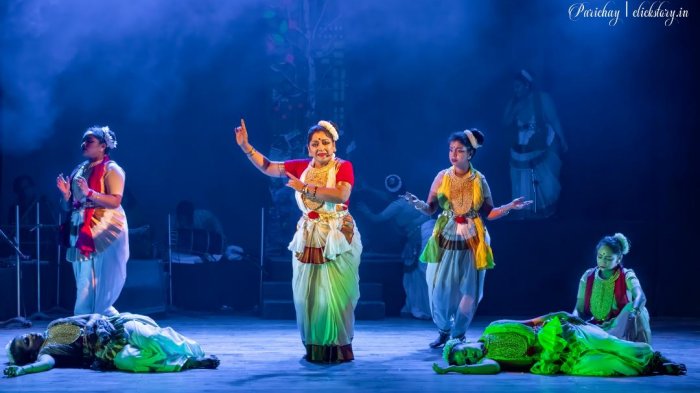 Grishma or summer with its hot days, pleasant evenings and moonlit nights, as described in Kalidasa's Ritusamhara has undergone a change due to the ravages of climate changes, which has brought in its wake, unbearable heat and water crisis. The choreography used metaphors to show drying up of rivers. River Sindhu was personified as the virahotkanthita nayika pining for Megh and her life giving outpourings to fill her dry bed - from Kalidasa's Meghdoot. The season of monsoon, which comes on the heels of summer, with its comforting drops of rain descending on earth was expressed through recitations used in Koodiyattam style by Sreeradha Ghosh, while the motif of the peacock spreading its wings to express joy with the first drops of rain were appropriate imageries. Mohiniyattam Guru Nirmala Paniker's choreography of the peacock dance performed by Srijaini Ghosh was rather tame. Rain filled river Gambhira from Meghdoot represented sambhoga shringara. Depiction of the river in spate destroying concrete constructions resulting in devastating floods was the flip side of the rainy season, that has become a common feature of modern times was expressed through T.M. Krishna's famous composition 'Poromboke' in Tamil where it says that rivers do not come to the city, the cities grow up on the banks of rivers. 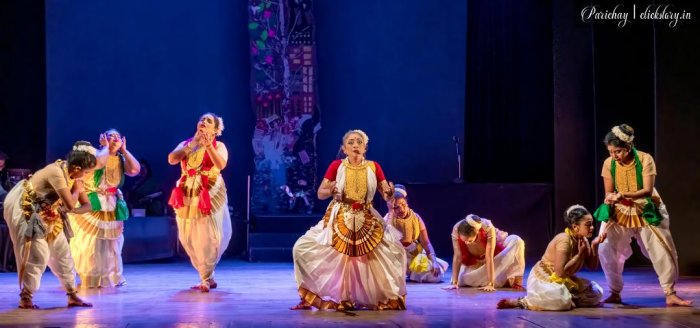 Clear skies of Sharat Ritu was elaborated beautifully described in Kalidasa's shlokas. The Hemant season with its accompanying cool breeze was expressed with a composition of D.L. Roy. Hemant or autumn's cool air, dew drops and foggy days and nights with the stars playing hide and seek has been replaced by smoggy months with pollution and bad air quality, causing breathing problems and lung congestion. And the beauty of winter days are marred with the continuance of health issues of autumn. Winter is a time for festivities marking harvest festivals. According to Kalidas, it is the time of new crops, sugarcanes and sweet eats. In Kerala, Thiruvathira or the union of Shiva and Parvathi is celebrated with dancing and singing. Then followed Vasant or Spring - the king of the seasons - when it's a time for rebirths and renewals, growth of new plants and foliage signaling rejuvenation. There is love in the air during spring. Manmatha or the god of love striking the hearts of beautiful maidens is associated with Spring. Here the famous composition of Guru Gopinath, Vasantotsavam was performed by young maidens, bringing out the beauty of the season. The performance ended with celebrating Janani Prithvi. The choreographers Priyadarshini Ghosh and Mohana Iyer rung the warning bell of the disaster of climate change that awaits us, which if not arrested would virtually bring about irreversible destruction of life on earth. 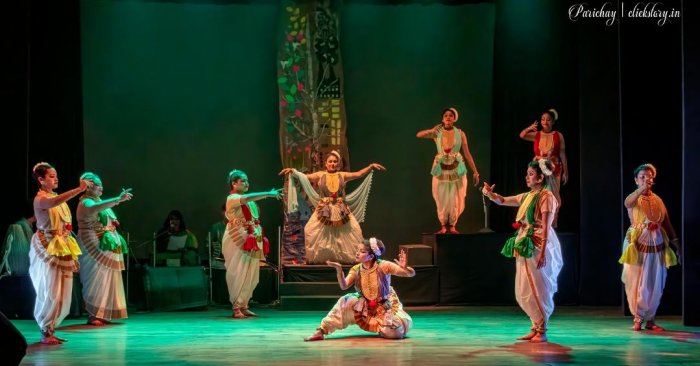 Mohiniyattam , the lasya tradition of Kerala, with its roots in Natya Sastra has been developed and nurtured by scholars, bards and playwrights from ancient times. Eighteenth century Sanskrit treatise Balarama Bharatam by the erstwhile Travancore King Kartika Tirunal Balarama Varma and later Swati Tirunal Rama Varma's eventual development and systemization of the present day Mohinyattam has visualized a costume for the Mohiniyattam dancer to complement its ultimate grace in the semi-circular movements of the form, which is distinct in style from any other existing dance form of the country. A few of the dancers costumed in a different style somewhat marred the grace of the form. The message of Sringaramayee Vasudha was loud and clear. It was a well-planned piece of work, though due to a technical glitch in the sound system the dialogues, narration, recitation and music were not always clear. Light arrangement could perhaps have been better. Principal performers Priyadarshini Ghosh and Mohana Iyer along with repertory members Sampurna Mukherjee, Sreeradha Ghosh, Sreemoyee Ghosh, Srijaini Ghosh, Saheli Sengupta, Sanjana Ghosh, Priyasmita Ghosh, Debanjali Bandhopadhyay, Astha Bhattacharya and sutradhar Debopama Bose of Natyanova were committed performers. 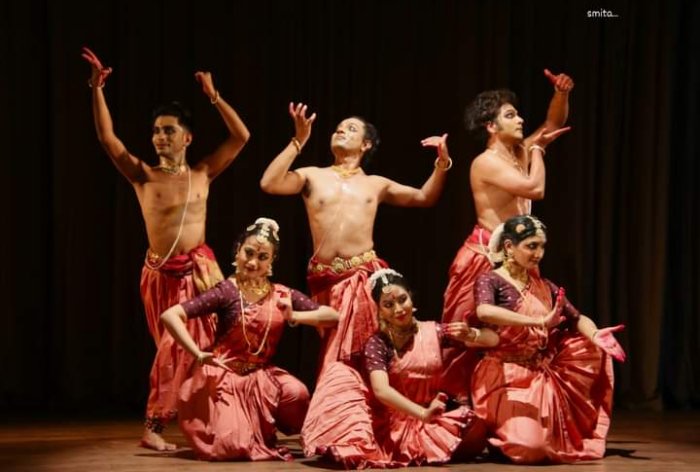 Sujatha Ramalingam's students Kalashrishti and its founder director Sujatha Ramalingam presented Hri-Shri-Dhi, a representation of Srishti - Sthiti - Proloy, the three forms of virtue, in Bharatanatyam style, in the first half of the evening. Saraswati Kauthuvam was their invocatory piece. The dancers bowed in reverence to Saraswati, the goddess of learning. Intricate jatis ornamented the kauthuvam in ragam Gowlai and talam mishra rupakam. "Sri Varalakshmi Namastubhyam" was a kirthanam that followed. Soon after was a naman to the lotus feet of Varalakshmi - the bestower of boons and an epitome of grace, in ragam Shree and talam rupakam. "Thaye Maheswari" varnam in ragam Jaganmohini and talam adi based on goddess Tara considered to be a form of Adishakti was a challenging piece, requiring expertise in nritta as well as abhinaya, executed with skill. Participants of the three dances were Induniva Dhawa, Subhajit Dutta, Biswapratim Bose, Puja Chatterjee, Sourami Mukherjee and Suryatapa Roy. The contrasting subject matter of the two halves of the evening were both entertaining and disturbing. One could sit back and enjoy the mythological stories of the goddesses, while Sringaramayee Vasudha made us put on our thinking caps and feel guilty about our joint karma that has brought about the devastating climate change. 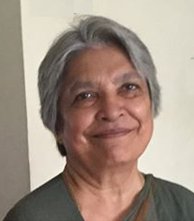 Tapati Chowdhurie trained under Guru Gopinath in Madras and was briefly with International Centre for Kathakali in New Delhi. Presently, she is a freelance writer on the performing arts. |